Picture this: The sky darkens ominously, thunder rumbles in the distance, and while your dog cowers under the bed, your cat suddenly appears calm and composed. Perhaps they even seek your company or settle into their favorite hiding spot with what seems like contentment. This fascinating phenomenon has puzzled cat owners for centuries, and modern science finally has answers.
Cats have heightened senses that allow them to detect storms before we can, yet their response often differs dramatically from what we might expect. So let’s dive in to uncover the mysteries behind feline behavior during nature’s most dramatic light shows.
The Mysterious Feline Weather Detection System
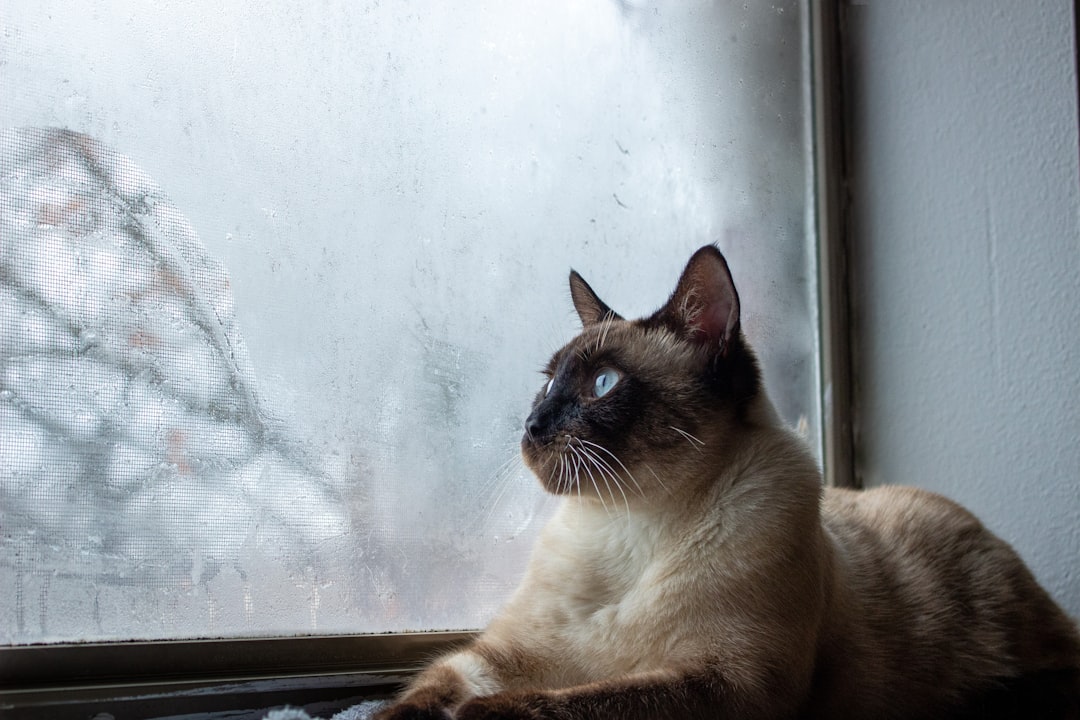
Cats are more sensitive to changes in atmospheric pressure, and their heightened senses can allow them to pick up hints that a storm is coming. This isn’t some supernatural ability, though sailors centuries ago might have thought otherwise. Cats are able to perceive shifts in barometric pressure before a storm hits.
Cats’ inner ears may detect the sudden fall in atmospheric pressure, and a cat is also more sensitive to sounds and smells, allowing them to hear the rumble of a thunderstorm before you do. Imagine having superpowers that let you sense weather changes hours in advance. That’s essentially what your cat experiences every time a storm approaches.
Their incredible sensitivity extends beyond just atmospheric pressure changes. While we have about 6 million odor receptors in our nose, cats have approximately 80 million, and during a thunderstorm, the lightning heats up the air, which causes ozone to form. Even humans can smell that distinctive pre-storm scent, so cats definitely pick up on these chemical changes in the air.
Why Some Cats Find Storms Oddly Reassuring
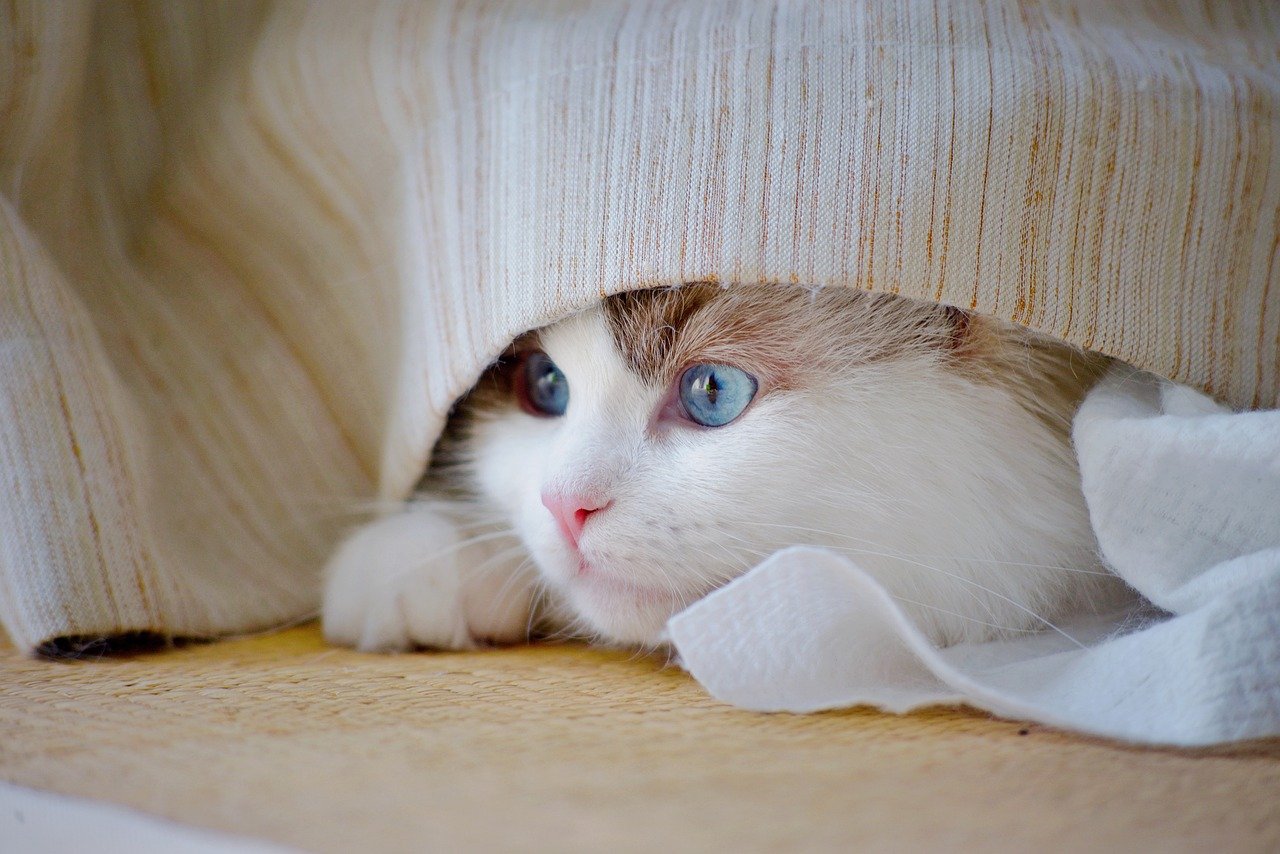
Here’s where things get truly interesting. It’s suspected that there are probably more cats bothered by thunderstorms than we realize, because they go somewhere they feel safe until the thunderstorm’s over, and since they aren’t bothering the owner in any particular way, they don’t notice it. This behavior might actually be a sign of cats finding their own form of comfort during stressful times.
Hiding is a valuable way cats cope with extreme fear or stress. Unlike dogs who might panic and become destructive, cats have developed sophisticated coping mechanisms. They instinctively seek out small, enclosed spaces that provide security and muffle the scary sounds outside.
Think of it like this: while dogs might run around in circles when stressed, cats become strategic architects of their own comfort zones. This behavior stems from their evolutionary history as both predator and prey animals, where finding secure hiding spots could mean the difference between life and death.
The Science Behind Feline Storm Anxiety Patterns

Cats with thunderstorm phobia immediately become anxious when they hear a storm approaching, and they sense changes in barometric pressure before and during a storm, and like many other animals, cats are also sensitive to and detect subtle changes in the atmosphere’s pressure brought on by thunderstorms. However, research shows that cats handle this anxiety differently than other pets.
Other creatures, like cats, are probably far from comfortable, but most don’t become overtly phobic, and fear is a normal response to a fear-inducing situation or circumstance, whereas phobias are extreme and seemingly irrational fears in which the response has been magnified to the point of dysfunction. This distinction is crucial for understanding why your cat might seem relatively calm during storms.
In research studies, fearful cats spent significantly less time near humans compared to non-fearful cats, and fearful cats traveled less than non-fearful cats, with fearful and mildly fearful animals showing significantly longer durations of inactivity. This suggests that cats’ seemingly calm behavior might actually be a freeze response rather than true comfort.
The Comfort-Seeking Behaviors Experts Have Observed
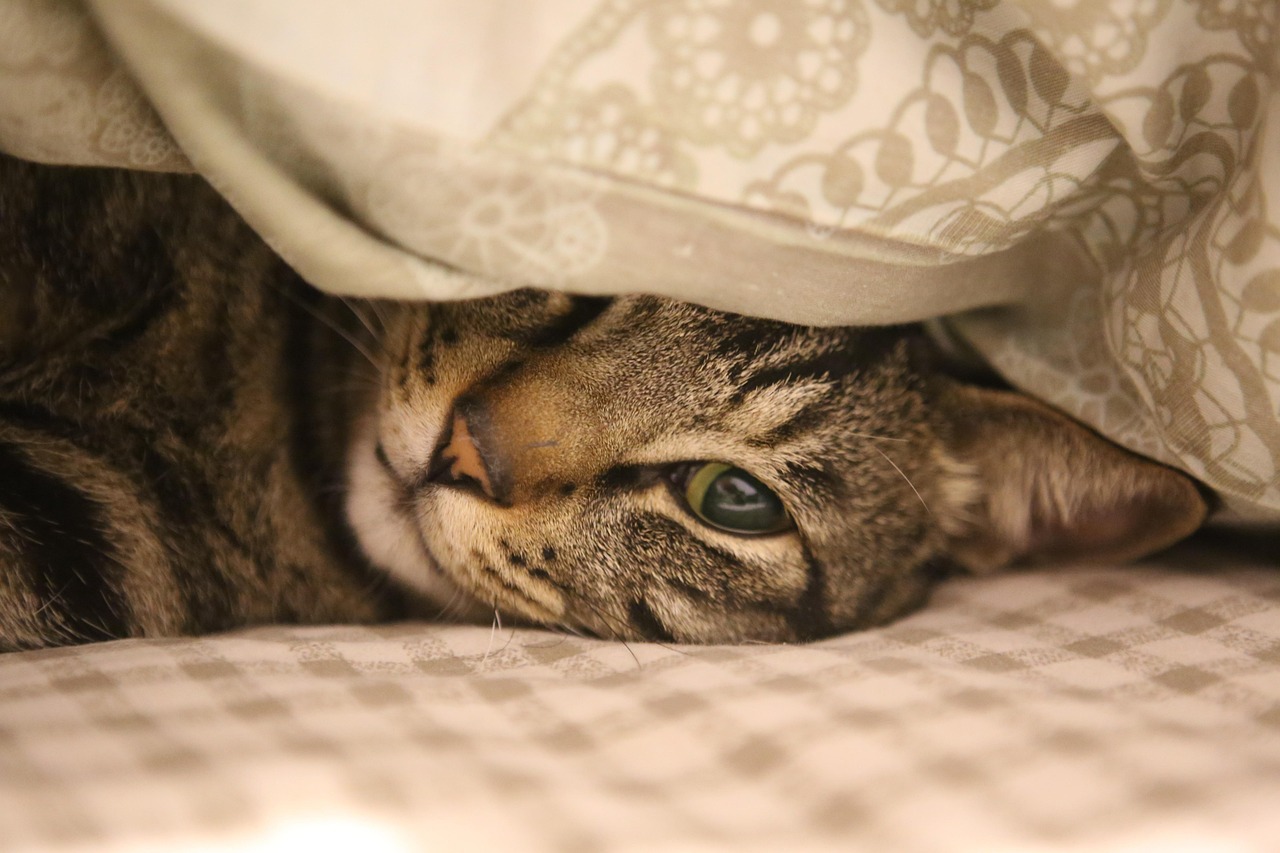
Your cat might start to show signs of stress when a storm is on its way and typically show their fear by trying to find somewhere to hide until the storm passes. But here’s the fascinating part: this hiding behavior often brings genuine comfort to cats, unlike the panic responses we see in other animals.
The most comforting place for your cat during a storm may be to remain curled up and hidden, so provide several cozy hideaway options for them. Veterinary behaviorists have noticed that cats who have access to multiple safe spaces often show less stress overall.
What’s remarkable is how cats seem to transform these hiding spots into personal sanctuaries. They’ll often bring favorite toys, position themselves where they can monitor their surroundings, or even invite trusted humans to join them in these safe spaces. This behavior suggests a level of emotional regulation that’s quite sophisticated.
When Hiding Becomes a Coping Strategy Rather Than Fear
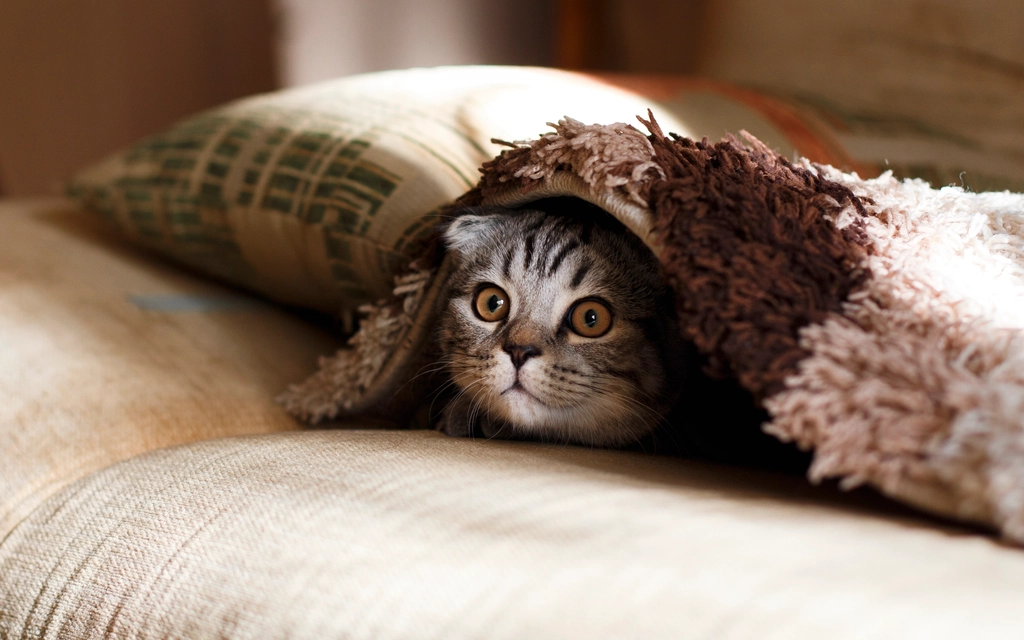
If your cat is walking around and during a thunderstorm decides to sit next to you but isn’t trembling or panting, and as soon as the storm’s over he jumps off and does his other stuff, everything may be okay, and if your cat goes under the bed in the midst of a window-rattling thunder and lightning storm that makes even you jump, that may be a normal response, not a maladaptive one. This behavioral pattern indicates healthy coping rather than pathological fear.
Anxiety and transitory fear aren’t necessarily a problem if your cat bounces back to normal in a relatively short amount of time, but it’s not normal for a cat to spend a lot of time hiding. The key difference lies in how quickly cats recover after the storm passes.
Professional animal behaviorists have observed that cats often develop personalized storm rituals. Some will methodically check all their favorite hiding spots before settling in one. Others might perform extra grooming sessions, which releases calming endorphins. These behaviors suggest that cats aren’t just enduring storms – they’re actively managing their emotional response to them.
The Role of Environmental Control in Feline Storm Response
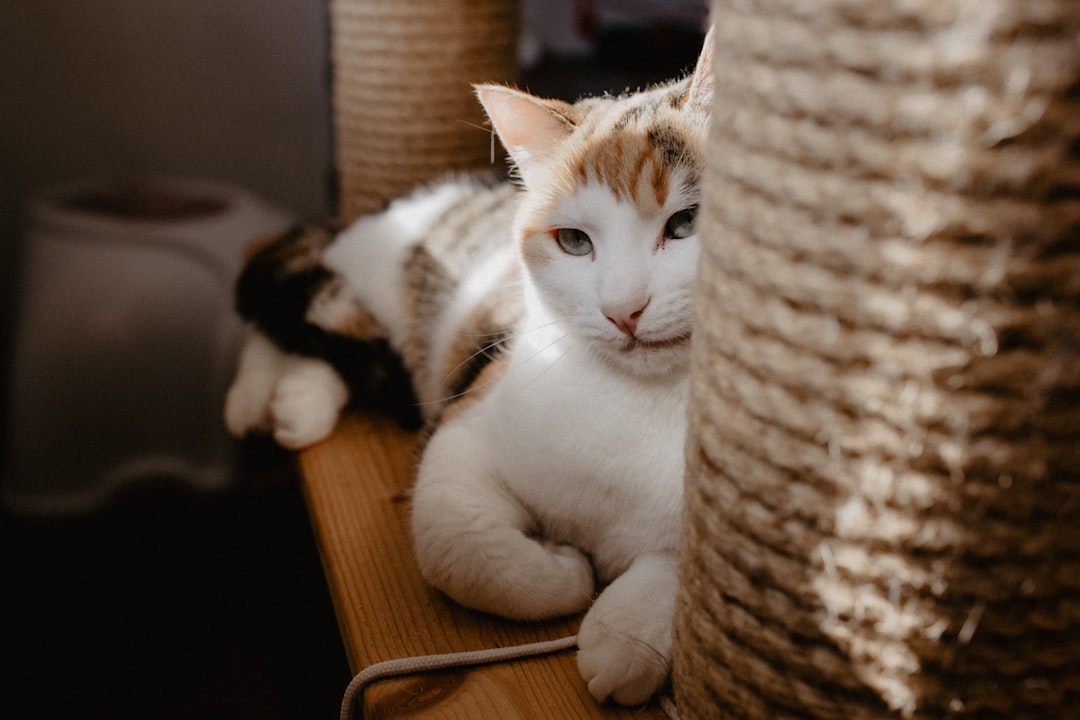
It can be tempting to think that it might be better to leave your cat with access to only one room during a thunderstorm, but in fact, it will likely stress your cat out instead of calming them down, because some cats hate to feel restricted and may get distressed if they realize they can’t go into a room they normally could. This need for environmental control is crucial to understanding feline storm behavior.
Most cats instinctively feel more comfortable when perching in high locations where they can relax and keep an eye on things. This behavior gives cats a sense of control over their environment, which can be remarkably soothing during unpredictable weather events.
Experts have noted that cats who have established multiple safe zones throughout the house show significantly less stress during storms. It’s as if having options gives them a psychological advantage. They’re not trapped by circumstances – they’re making strategic choices about where to weather the storm.
The Surprising Human Connection Factor
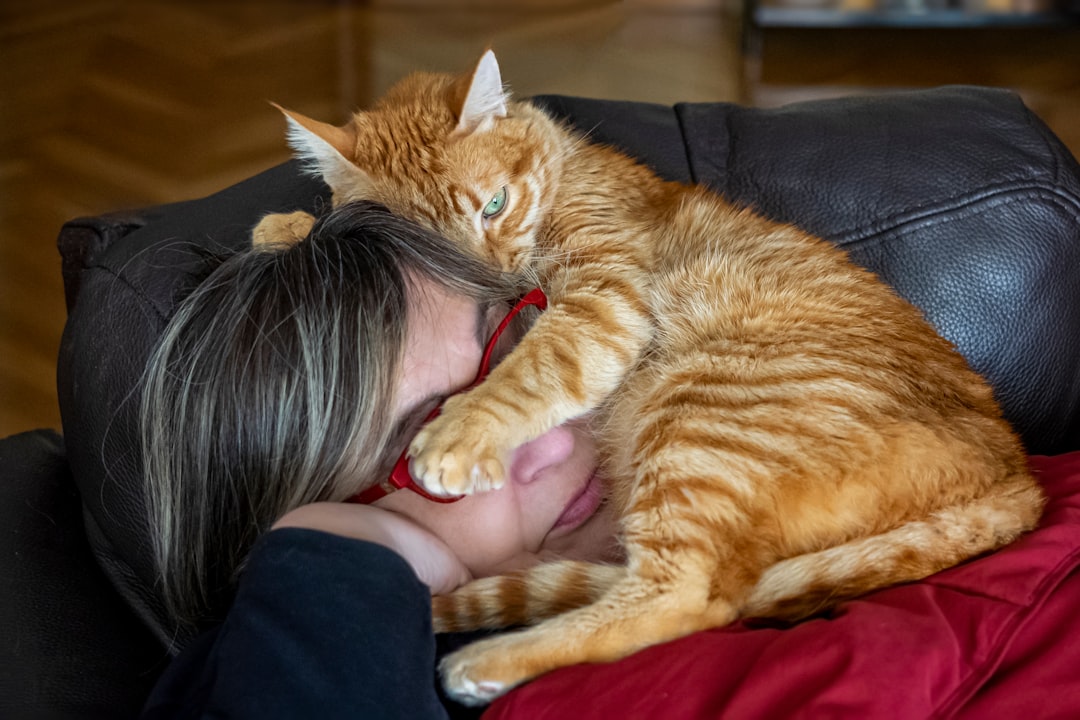
If the storm makes you nervous then your cat is likely to pick up on that anxiety, because cats are masters at reading body language and they know when we aren’t behaving and moving like our normal selves. This emotional contagion works both ways, though, and some cats actually find human presence comforting during storms.
They might not want to sit on your lap, but they will gain comfort from the fact that you’re at home, and some may choose to seek you out for a cuddle while others will be happier hiding away until the storm passes. This selective social behavior shows sophisticated emotional intelligence.
If your cat does want comfort, then be there for him and offer affection and reassurance in the way he prefers, as your cat may feel most comforted by being in your lap, or may just want to sit next to you without being petted or touched. The fact that cats can communicate their specific comfort needs during stressful times demonstrates remarkable emotional sophistication.
Modern Veterinary Understanding of Feline Storm Responses

Fear, anxiety, and stress are among the most prevalent behavioral problems in cats, and this review delves into the core concepts of anxiety, fear, and stress responses in domestic cats, highlighting their unique characteristics. Recent veterinary research has revolutionized our understanding of how cats process storm-related stress.
A feline veterinary ethology professional is a specialist that through veterinary science and ethological principle will try to discover the underlying reasons for behavioral issues, and the first and most important thing is to try to establish whether the behavioral cause is the product of something organic or is of behavioral origin. This scientific approach has revealed that many cats’ storm responses are actually adaptive rather than pathological.
While cats generally appear more composed than dogs during storms, some felines experience significant anxiety and fear during these weather events, and understanding how thunderstorms affect cats and recognizing the signs of storm-related anxiety is crucial for helping our feline friends cope. However, what we’re learning is that this composure often reflects effective coping strategies rather than indifference.
Creating Optimal Storm Comfort for Your Cat

To help cats feel secure during weather changes, it is essential to create safe spaces within the home, which could be a cozy bed in a quiet room, a covered cat tree, or even a designated area with their favorite toys, as these safe spaces can provide comfort and reduce anxiety during storms. The key is understanding that cats need multiple options, not just one hiding spot.
Cats can benefit from multiple spaces throughout their home where they’d feel safe, and depending on your home, you can create these comfort zones in the corners of your bedroom or office, with a great idea being to create spots high off the ground, which makes cats feel extra safe. Height advantage gives cats both physical and psychological security.
Professional behaviorists recommend what they call “storm preparation rituals” for cats. This might involve checking that all their favorite hiding spots are accessible, ensuring fresh water is available in multiple locations, and even playing soft music to mask sudden thunder claps. The goal is to give cats maximum control over their environment during unpredictable weather.
When Storm Behavior Indicates Deeper Issues
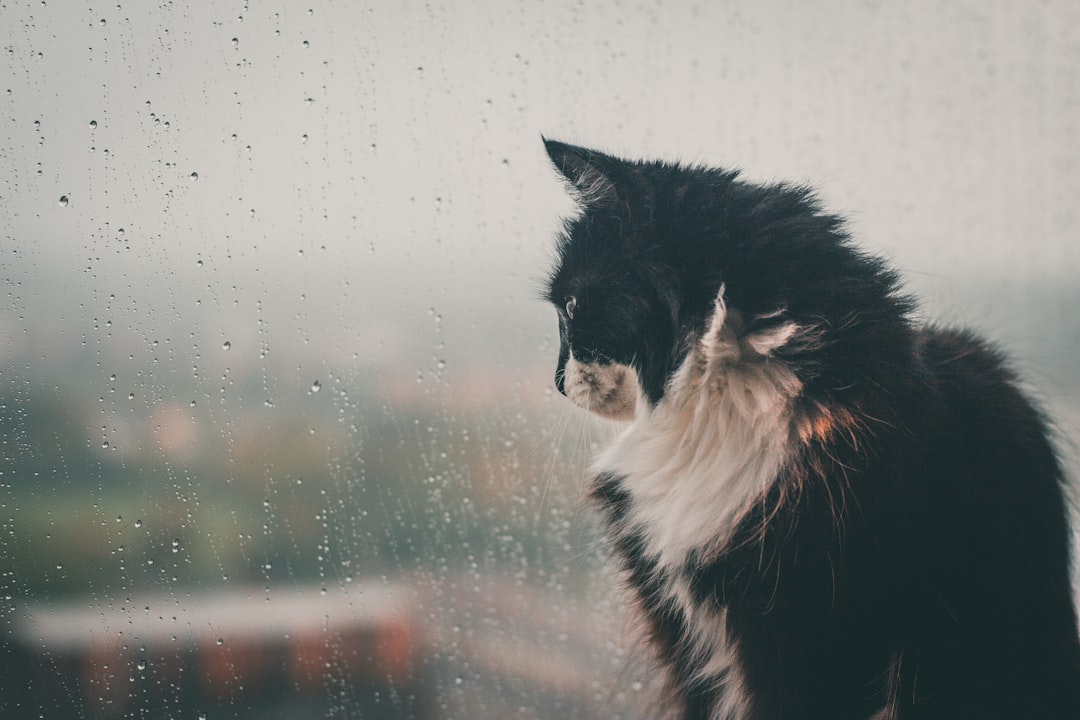
While most cats do not respond to phobias with destructive behavior, you may note your cat in a great panic to hide whenever a storm approaches, and extreme phobias can be bad for a cat’s health, as high stress causes the production of excess cortisol hormones in the body, which is very hard on the entire body. Recognizing the difference between normal coping and problematic anxiety is crucial for cat owners.
Thunderstorm phobias may intensify with each storm experience, and you may start to find that your cat is presenting erratic or fearful behavior in the hours before a storm arrives. This escalation pattern indicates when professional intervention might be necessary.
Cats are generally less likely to show severe thunderstorm phobia compared to dogs, however, individual cats can still develop significant storm-related anxiety, particularly if they’ve had traumatic experiences during previous storms. Understanding your individual cat’s history and patterns helps determine whether their storm behavior represents healthy coping or requires veterinary attention.
Storm season doesn’t have to be a source of dread for you or your feline companion. By understanding that cats often find genuine comfort in their own coping strategies during thunderstorms, we can better support their natural resilience. The next time dark clouds gather and your cat disappears to their favorite hideaway, remember that they’re not just hiding – they’re demonstrating sophisticated emotional regulation that has served their species well for thousands of years.
What do you think about your cat’s storm behavior now that you understand the science behind it? Tell us in the comments about your own observations of feline thunderstorm responses.






